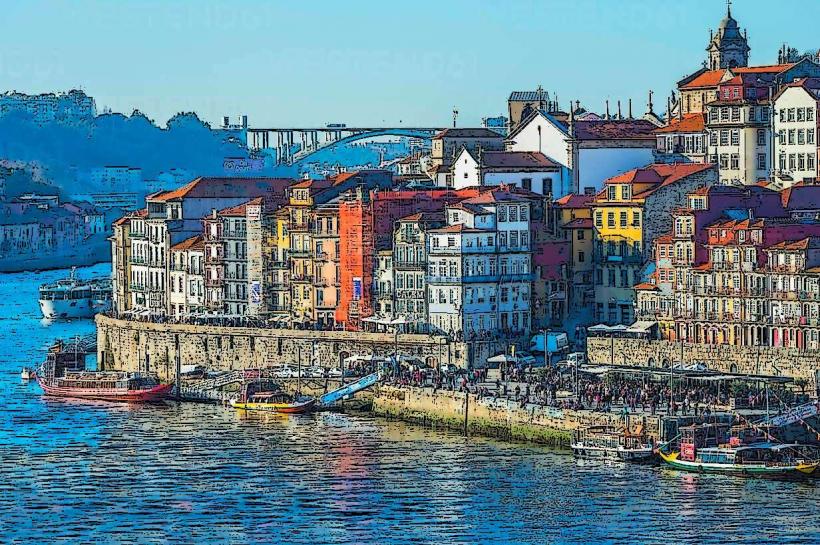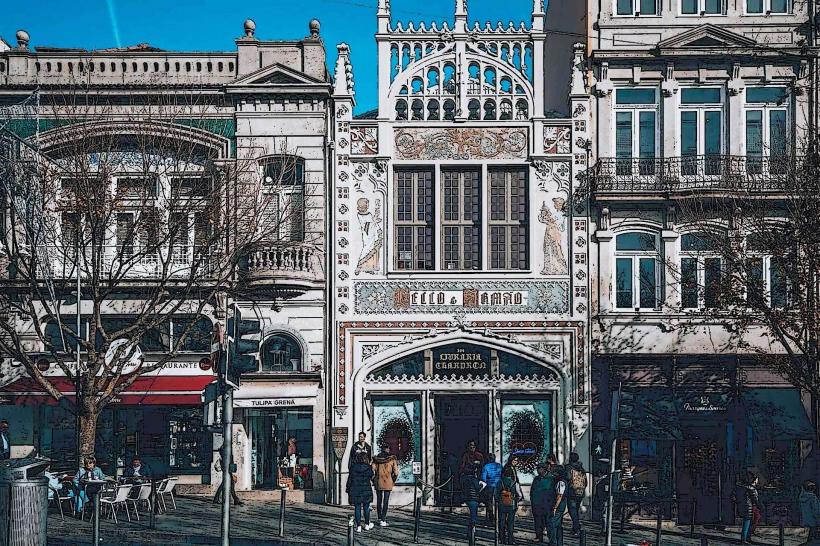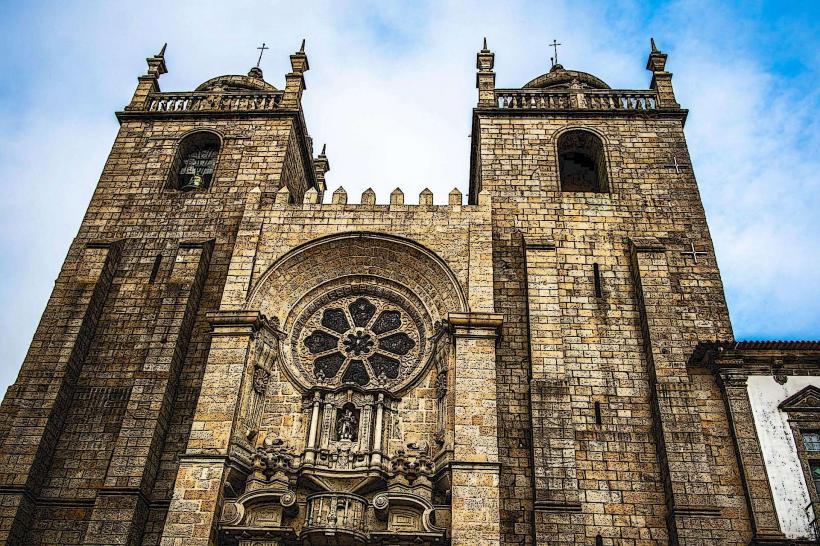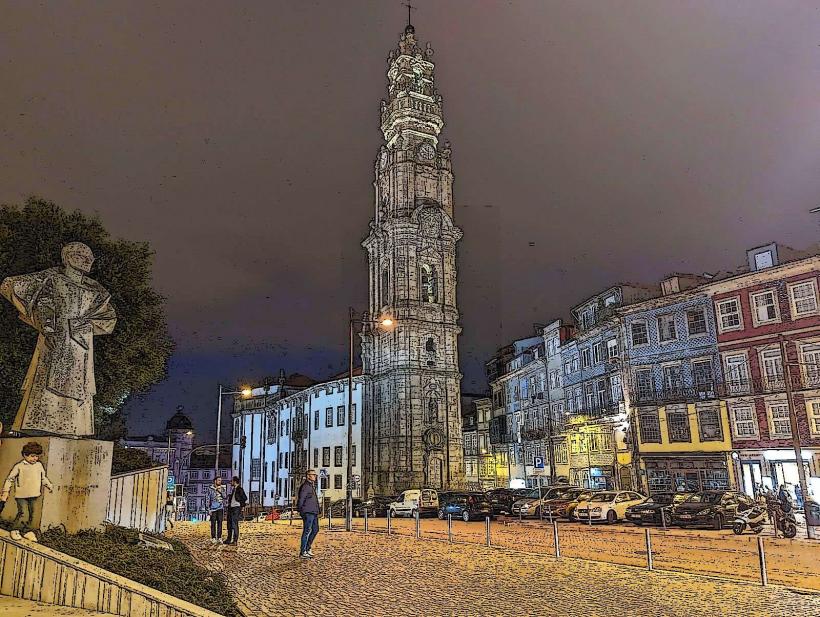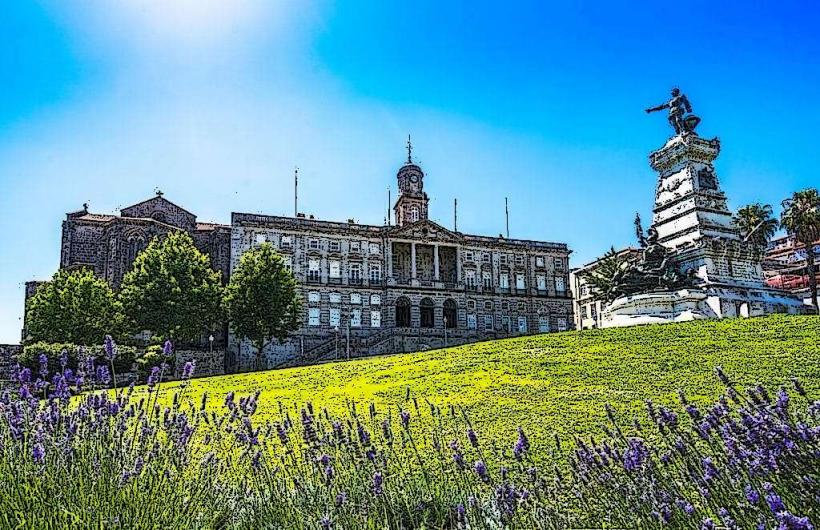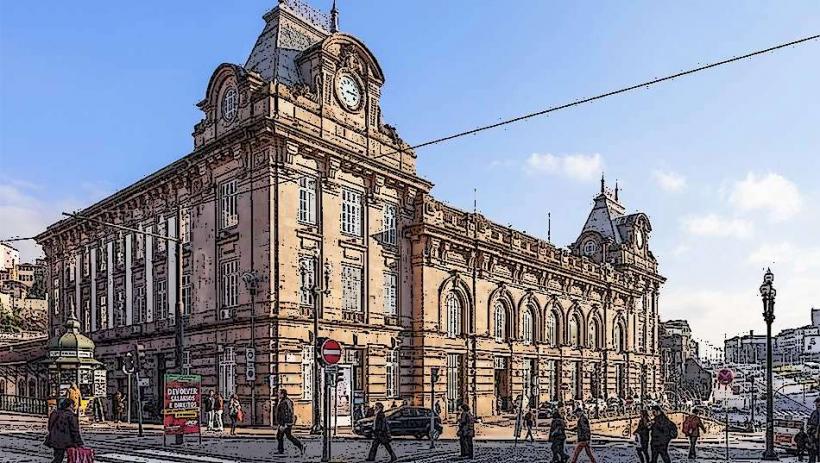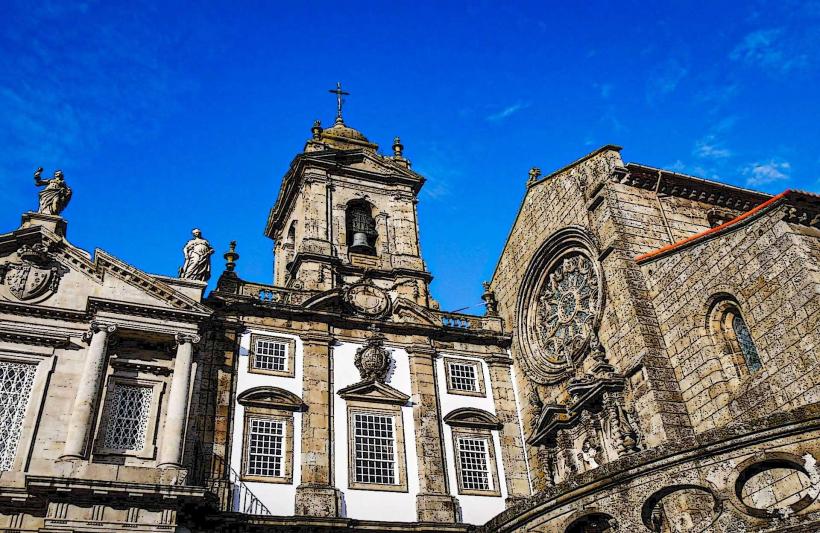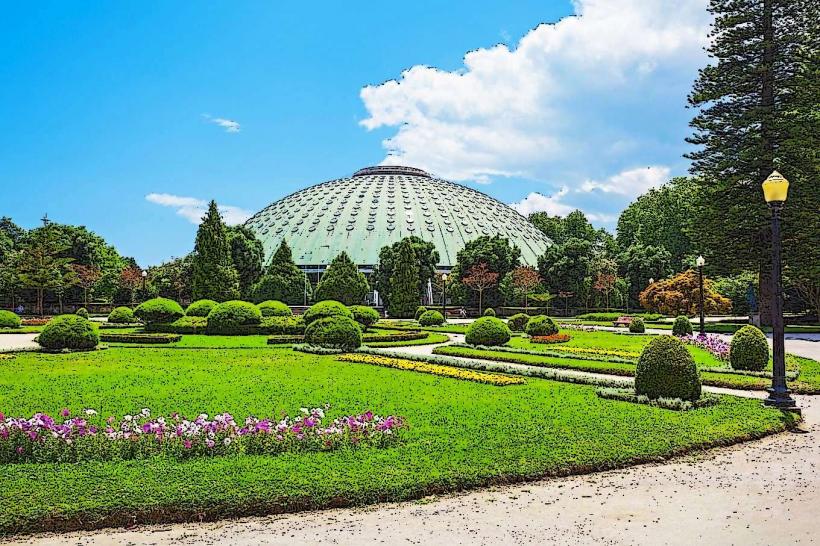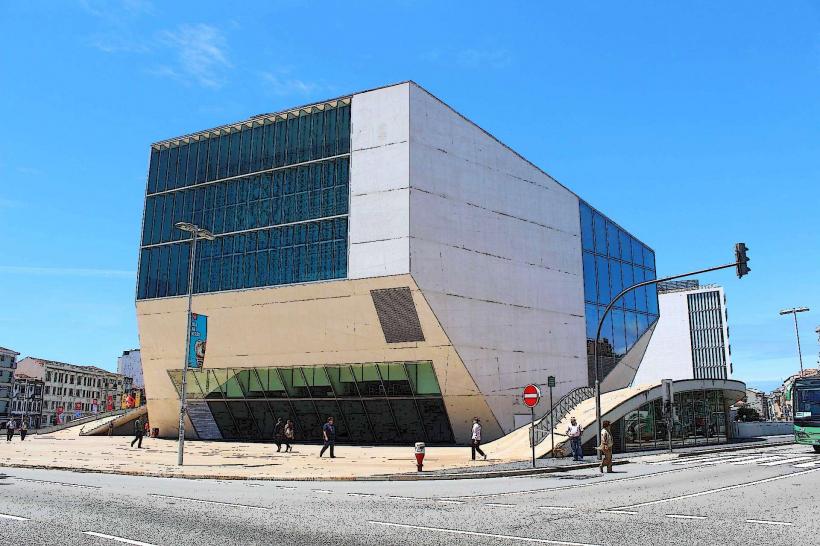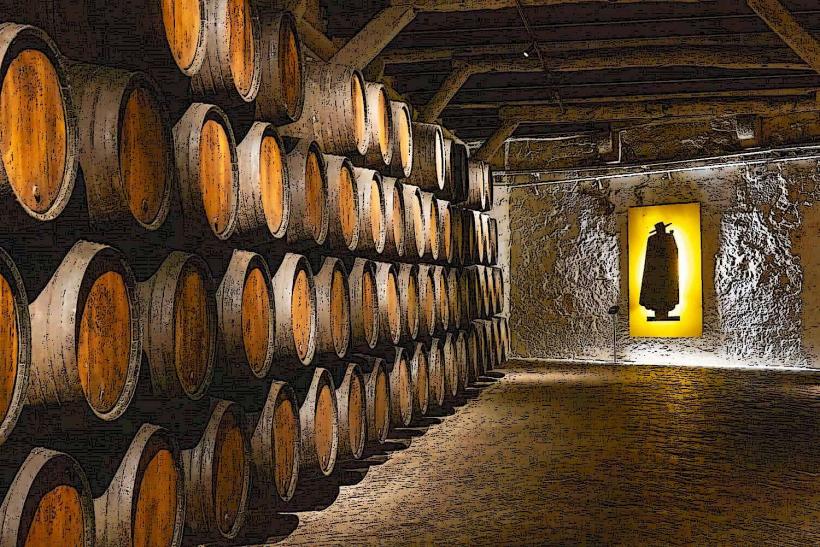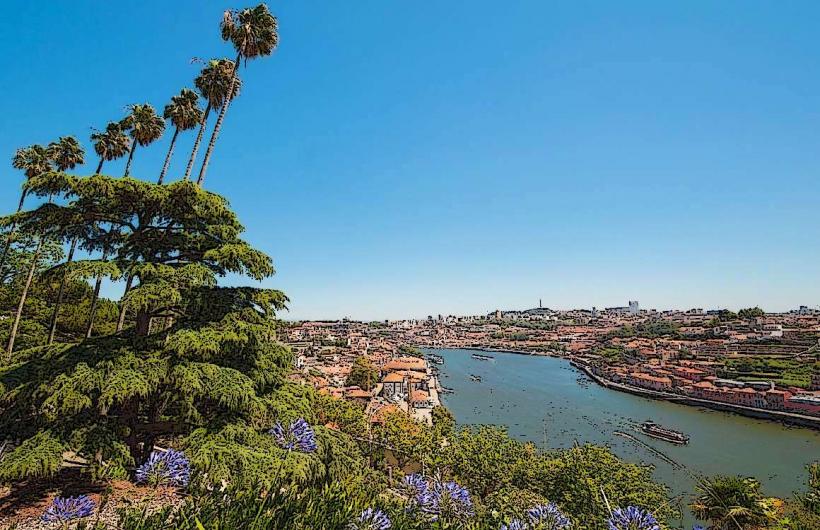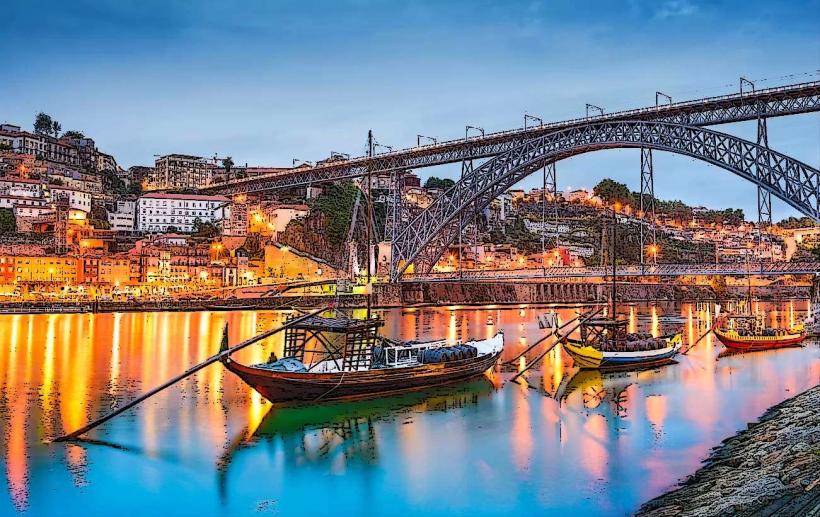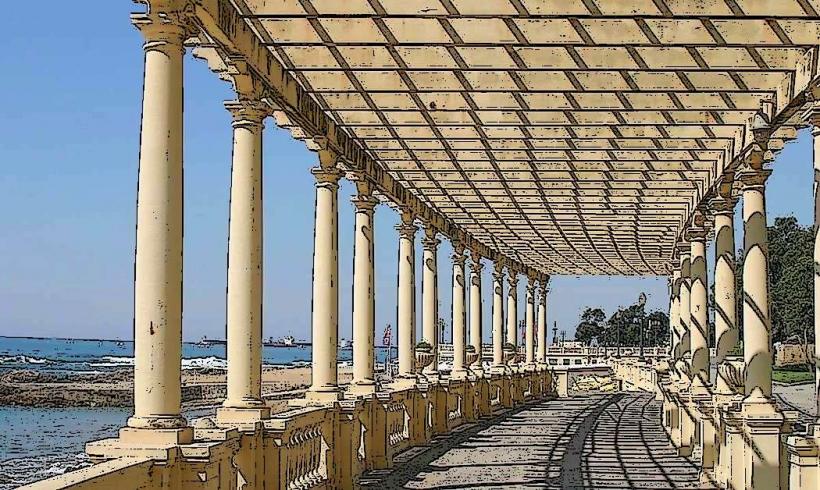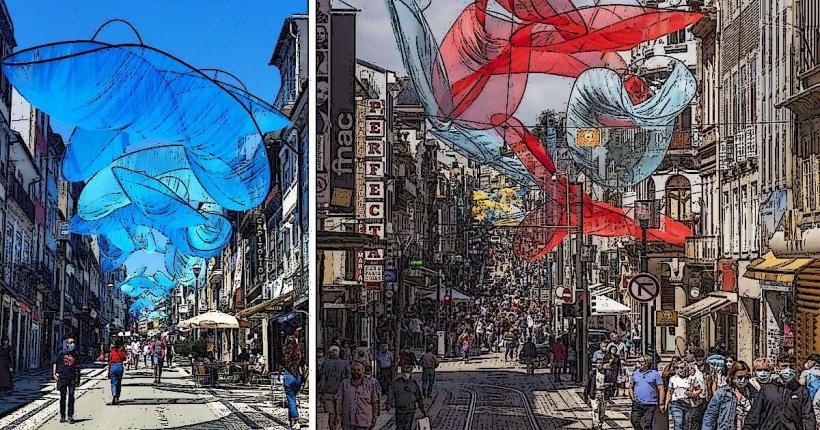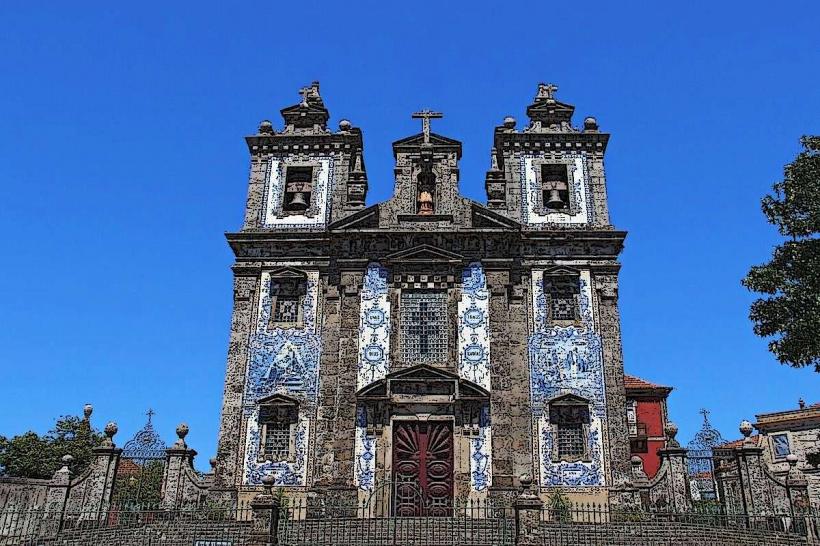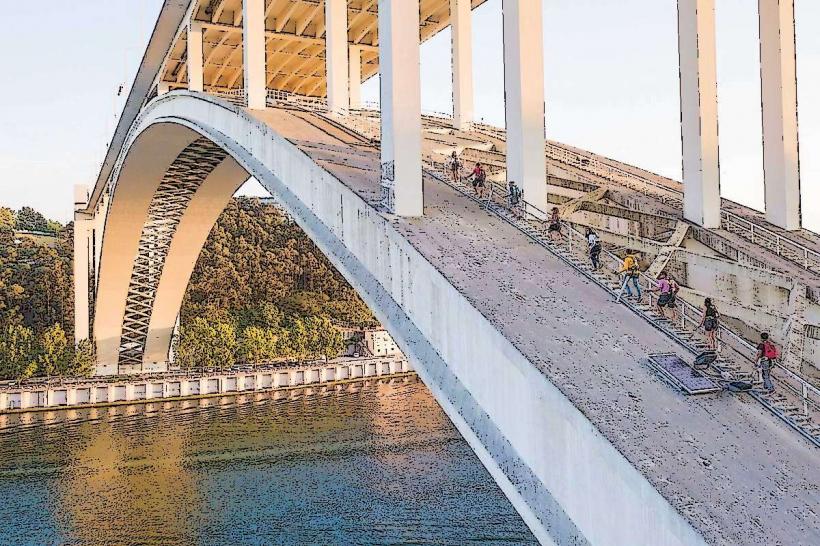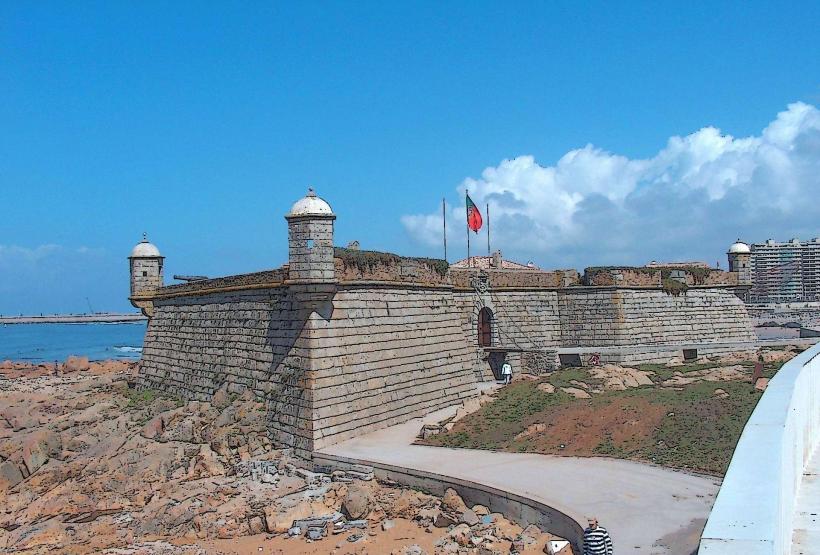Information
Landmark: Dom Luis I BridgeCity: Porto
Country: Portugal
Continent: Europe
The Dom Luís I Bridge (Ponte Dom Luís I) is one of the most famous and iconic landmarks in Porto, Portugal. Spanning the Douro River, this stunning double-deck iron bridge connects the city of Porto with the Vila Nova de Gaia district, located on the southern bank of the river. Known for its distinctive arch structure and historical significance, the Dom Luís I Bridge is a symbol of Porto’s industrial heritage and a prominent feature of the city’s skyline.
1. History and Construction
- Inauguration: The Dom Luís I Bridge was officially opened on October 31, 1886. It was designed by the engineer Théophile Seyrig, who worked under the mentorship of the renowned Gustave Eiffel, the French engineer famous for designing the Eiffel Tower in Paris.
- Construction: The bridge was constructed during the late 19th century, a period when Porto was undergoing rapid industrial development. The idea behind the bridge was to improve transportation between Porto and Gaia, particularly to facilitate the movement of goods and people across the Douro River. The bridge was designed to accommodate both road traffic and trains, which was essential for the growing commercial and industrial activities in the region.
- Design and Engineering: The Dom Luís I Bridge is a double-decked structure, with one level dedicated to road traffic and the other to railroad traffic. The bridge features a large iron arch that spans the river, which was a pioneering design at the time and contributed to its status as an engineering marvel. It is built using cast iron, a material that was relatively new and revolutionary in bridge construction at the time.
2. Architectural Features
- Iron Arch: The most striking feature of the Dom Luís I Bridge is its massive iron arch, which was a technical feat of engineering in the late 19th century. The arch stretches 172 meters (564 feet) across the Douro River, making it one of the longest spans in Europe at the time. The arch’s graceful curve gives the bridge its distinctive appearance, and it remains one of the most photographed landmarks in Porto.
- Double Deck: The bridge has two decks:
- The upper deck is dedicated to metro and pedestrian traffic. It offers incredible panoramic views of Porto, Gaia, and the Douro River, making it a popular spot for visitors and photographers.
- The lower deck is primarily used for road traffic and is also a popular route for vehicles traveling between the two cities.
- The two decks are connected by large steel supports that help distribute the weight of the bridge.
- Materials: The use of cast iron and steel in the construction of the bridge was an innovative choice for the time. The materials provided the necessary strength for such a large structure while giving it a delicate, ornate appearance that contrasts with the more robust stone bridges in Porto.
3. Functionality and Transportation
- Metro Line: The Dom Luís I Bridge is an important part of Porto’s metro system. The upper deck is dedicated to the Metro do Porto's line D, which connects Porto's city center with Vila Nova de Gaia and other destinations on the southern bank of the Douro River. The metro line makes the bridge a critical transportation link between the two cities.
- Road Traffic: The lower deck accommodates road vehicles, making the bridge essential for commuting and transportation between Porto and Gaia. It is also a significant route for tourism, as many visitors use the bridge to travel between the two cities, exploring their historical and cultural sites.
- Pedestrian Access: The upper deck, with its wide sidewalks, allows pedestrians to cross the bridge on foot, offering breathtaking views of Porto’s riverfront, including the famous Ribeira district and the port wine cellars on the Gaia side of the river.
4. Cultural and Symbolic Significance
- Icon of Porto: The Dom Luís I Bridge is an iconic symbol of Porto and is one of the most recognized structures in Portugal. Its distinctive design and engineering make it one of the most famous iron bridges in the world. The bridge's image is often used in promotional materials for the city and country.
- Symbol of Industrial Age: As a product of the industrial revolution in Porto, the Dom Luís I Bridge is seen as a symbol of the city’s growth during this period. The bridge helped to facilitate trade and commerce between Porto and Gaia, and it remains a testament to the ingenuity of 19th-century engineers.
- Panoramic Views: One of the main attractions of the Dom Luís I Bridge is the breathtaking view it offers of Porto and the Douro River. The upper deck provides an unparalleled view of the historic city center, the Ribeira district, the old port wine cellars, and the rolling hills on the southern bank of the river. The sight of the river and the colorful buildings lining its banks is one of the most iconic vistas in Porto.
5. Tourism and Visitor Experience
- Walking the Bridge: The Dom Luís I Bridge is a popular spot for tourists who want to enjoy stunning views of the river and the surrounding cities. Walking across the bridge is a popular activity for visitors, as it offers a unique perspective of Porto and Gaia. The upper deck, which is dedicated to pedestrians and the metro, is the best place to enjoy the panoramic views of Porto’s historic center.
- Photography: The bridge is one of the most photographed landmarks in Porto. Its striking design, combined with the picturesque backdrop of Porto’s colorful buildings and the winding Douro River, makes it an ideal location for photography, especially at sunset or at night when the bridge is illuminated.
- Visiting the Nearby Areas: The Dom Luís I Bridge connects two of Porto's most historic and vibrant districts—Porto’s Ribeira district on the northern bank and Vila Nova de Gaia on the southern bank. Both areas are rich in history, culture, and architecture, with historic buildings, wine cellars, restaurants, and cafés. Tourists often visit the port wine cellars on the Gaia side to sample the famous Port wine.
- On the Porto side, visitors can explore the Ribeira district, a UNESCO World Heritage site, with its narrow streets, colorful buildings, and vibrant atmosphere.
6. Maintenance and Preservation
- Restoration Efforts: Over the years, the Dom Luís I Bridge has undergone several restoration projects to preserve its structural integrity and aesthetic beauty. As an important historical monument and engineering feat, it is regularly maintained to ensure its safety for both vehicular and pedestrian traffic.
- Protecting the Heritage: The bridge is listed as a national monument and is considered a key part of Porto’s industrial heritage. Efforts are made to maintain and protect the bridge as both a functional transportation link and a cultural asset.
7. Summary
The Dom Luís I Bridge is one of the most impressive and historic landmarks in Porto. It represents a key moment in the city’s development during the industrial revolution and stands as a testament to the ingenuity and craftsmanship of 19th-century engineers. Spanning the Douro River, the bridge offers stunning views of Porto and Gaia, making it a must-visit spot for tourists. Its unique double-deck design, its historical significance, and its role in the city’s transportation network make it a symbol of Porto and a lasting achievement in civil engineering.

